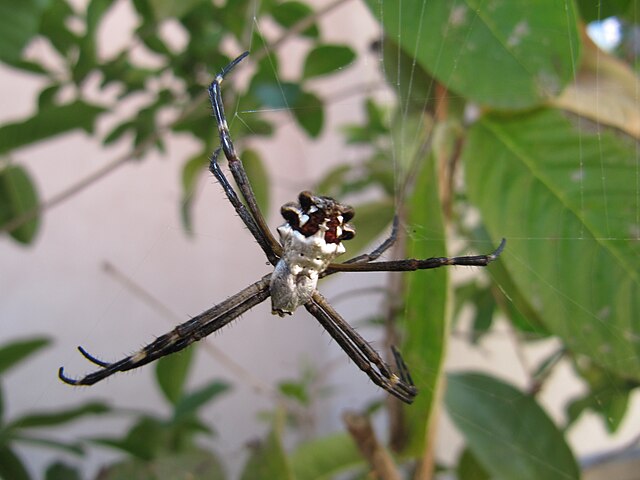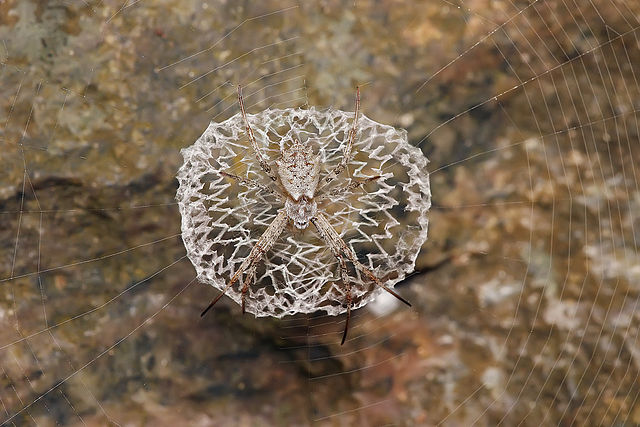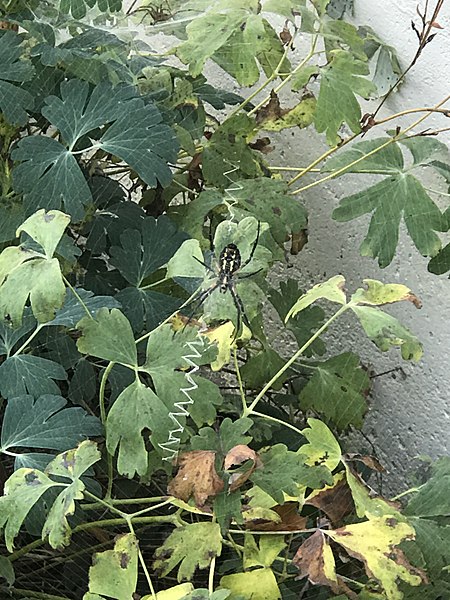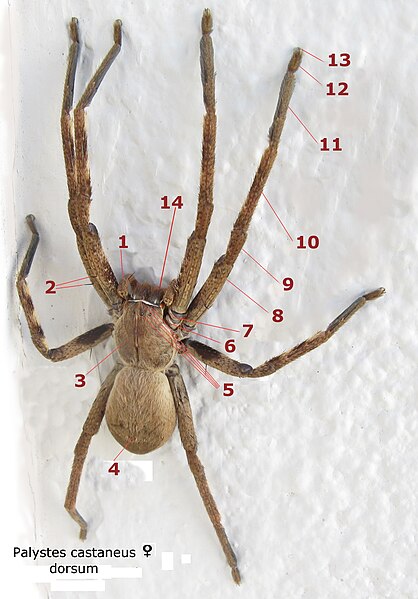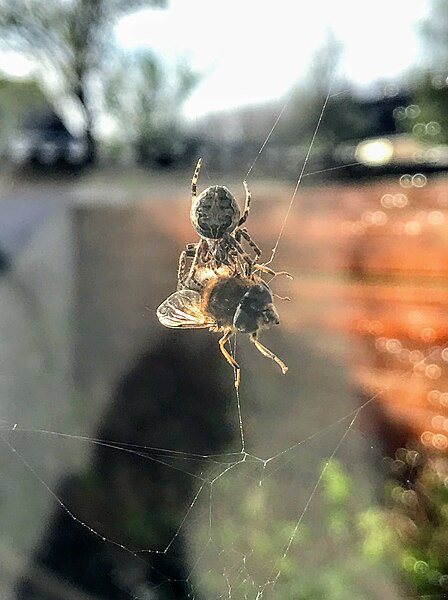The genus Argiope includes rather large spiders that often have a strikingly coloured abdomen. These spiders are distributed throughout the world. Most countries in tropical or temperate climates host one or more species that are similar in appearance. The etymology of Argiope is from a Latin word argentum meaning silver. The carapace of Argiope species is typically covered in silvery hairs, and when crawling in the sun, they reflect it in a way that gives them a metallic, white appearance.
Argiope (spider)
Argiope sp. blending in to elaborate stabilimentum in Tanzania
Writing spider eating a swallowtail butterfly in Holly Springs, North Carolina
An argiope's web with stabilimentum in Independence, Missouri
Spiders are air-breathing arthropods that have eight limbs, chelicerae with fangs generally able to inject venom, and spinnerets that extrude silk. They are the largest order of arachnids and rank seventh in total species diversity among all orders of organisms. Spiders are found worldwide on every continent except Antarctica, and have become established in nearly every land habitat. As of November 2023, 51,673 spider species in 136 families have been recorded by taxonomists. However, there has been debate among scientists about how families should be classified, with over 20 different classifications proposed since 1900.
Spider
Palystes castaneus female, dorsal aspect pedipalp trichobothria carapace of prosoma (cephalothorax) opisthosoma (abdomen) eyes AL (anterior lateral) AM (anterior median) PL (posterior lateral) PM (posterior median) Leg segments: coxa trochanter femur patella tibia metatarsus tarsus claw chelicera
Palystes castaneus female, ventral aspect. Nos 1 to 14 as for dorsal aspect. sternum of prosoma pedicel (also called pedicle) book lung sac book lung stigma epigastric fold epigyne anterior spinneret posterior spinneret Legs are labelled I, II, III, IV from anterior to posterior.
A syrphid fly captured in the web of a spider

